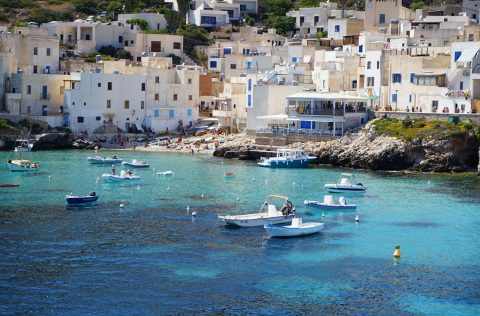Discover The Enchanting Italian Island That’s Closer to Africa Than Sicily
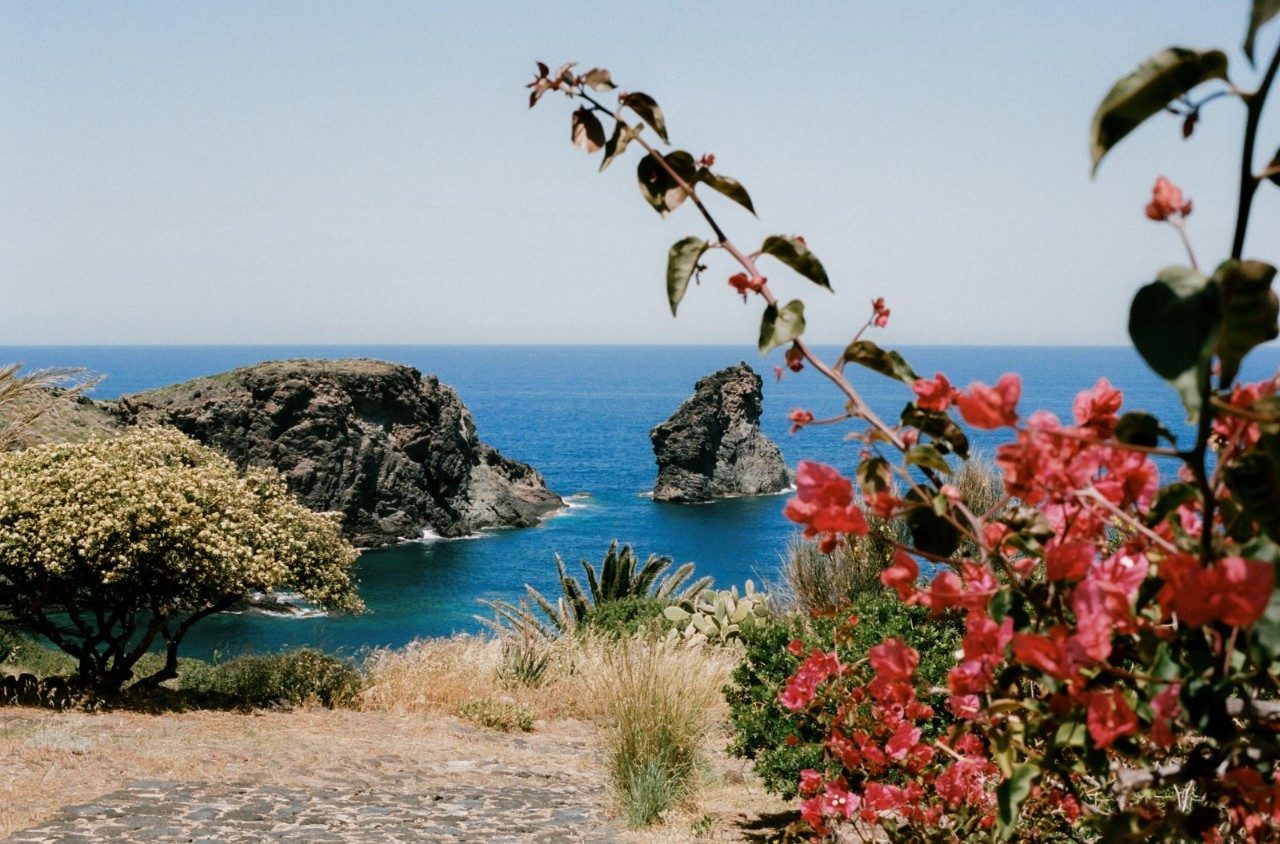
“There’s a saying on Pantelleria,” Sciascia Gambaccini tells me over a freshly made lemonade on the verandah of the converted traditional dammuso house she’s owned since the early 1990s. “You cry when you arrive and you cry when you leave.” A former fashion editor – for Vogue Italia among others – Gambaccini and her photographer husband, Wayne Maser, are among the many who have been drawn to this 14-kilometre-long chunk of lava in the Mediterranean. Giorgio Armani is another. So is French actress Carole Bouquet, who owns a wine estate here.
After three days on the Italian island, I know exactly what Gambaccini means. With its black rock and sparse vegetation, Pantelleria isn’t obviously pretty – it “pushes you away”, as much as it embraces you. It also possesses a strange magic.
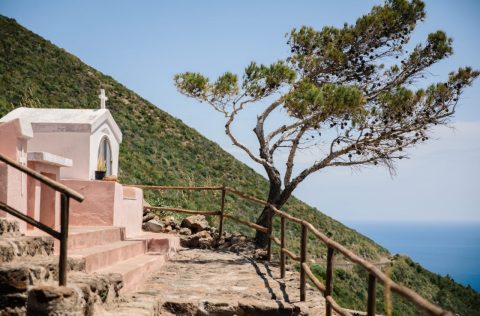
Standing up high in the island’s interior alongside winemaker Nicola Poma, I look across one of Cantine Pellegrino’s vineyards, where he does his best work. Here, the vines are low clumps. With roots thrust into the dusty black soil, they’ve been trained according to the traditional alberello system to be just high enough to keep the zibibbo grapes off the ground. The canopy of leaves creates shade, Poma tells me, while the hunched shape helps to protect the fruit from the stiff winds the island is known for. Yet from these harsh conditions derive a series of dessert wines that are masterpieces of dense, complex, concentrated sweetness.
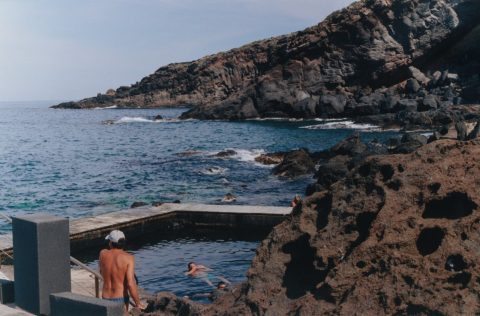
On Pantelleria, olive trees grow to knee height and caper plants (an abundant crop) stay close to the soil like abandoned Tina Turner wigs. Made of the same black rock as the landscape, the houses hug contours and delve into declivities, and the volcanic beaches are dotted with sunbathers lying flat as racing-car spoilers next to crystal-clear waters. Writer and environmental guide Peppe D’Aietti (+39 328 416 5598), an authority on the island’s history and culture, shows me a defiant citrus tree on his property. It’s surrounded by a high, circular drystone wall. This is a giardino pantesco (Pantelleria garden), explains D’Aietti, and serves a double function: protection of the citrus and as somewhere for farmers to put the rocks they clear from their fields.
The island’s history is a reflection of its harsh terrain. Pantelleria was prey to pirate raids launched from North Africa, with the coast of present-day Tunisia (which you can see on a clear day) only about 70 kilometres away. In the 19th and 20th centuries, successive rulers of Italy, up to and including Mussolini, would send those they saw as troublemakers or political opponents into exile here. In May and June 1943, the island’s port and largest town – also called Pantelleria – were reduced to rubble by Allied forces, along with the airport.
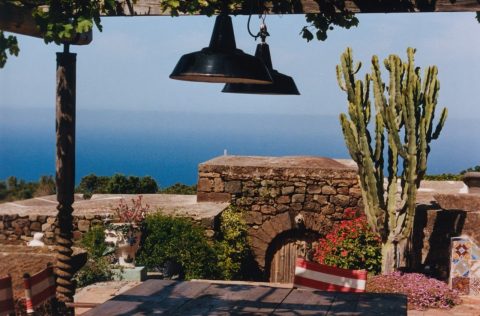
Today, 80 per cent of the island, which is a 2.5-hour high-speed ferry ride from Trapani in Sicily or a 50-minute flight from Palermo, is a national park and strict planning regulations mean that its hotels tend to be small-scale and embedded in the landscape. Sikelia has 20 rooms and is a haven of barefoot chic with its cluster of whitewashed, domed dammusi dwellings. It’s the kind of place where you find yourself sitting on a rooftop terrace, drinking a Hugo spritz, watching the sun set somewhere over Africa and listening to flamboyant owner Giulia Pazienza Gelmetti rhapsodising about the island’s volcanic magnetism. This is a destination, after all, that focuses on the elemental, reducing a visit to a series of simple verbs: walk, swim, slumber, eat, sip, breathe.
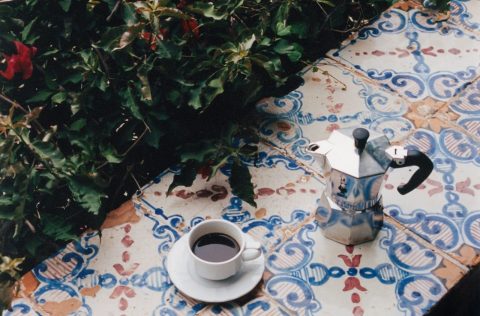
The Pantellerian vehicle of choice used to be the donkey; today it’s a battered Fiat Panda. Pick up a rental car at the airport and this is what you’re likely to get. Soon confronted with the spiky wild flora and the rough tracks that lead off from the few paved roads, I’m glad I wasn’t given anything fancier. Just a 15-minute drive from the port – reconstructed after the war and endearing in its lack of pretension – is the Lago Specchio di Venere (the Mirror of Venus Lake). On arrival at this blue-green body of water that formed inside a collapsed volcanic crater and is fed by hot thermal springs, the Pantellerian thing to do is lie on the shore and smear yourself in mineral-rich mud. (On the way there or back, if you’re lucky, you might encounter the island’s only functioning traffic light.)
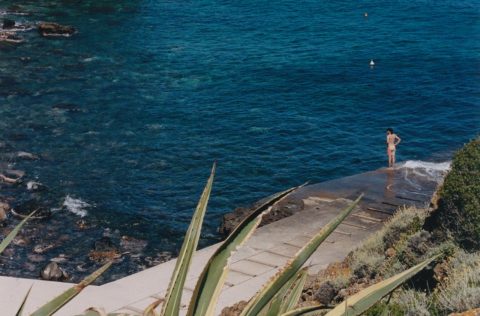
Trattoria Pina is a simple lakeside eatery of checked tablecloths under palm trees, where I graze on insalata pantesca – a local salad of potatoes, capers, onions, tomatoes and oregano – before fortifying myself with an intense pasta alla Norma to go trekking on one of the many marked trails that criss-cross the island (scuba diving and mountain biking are more active options). Press on further down the north-east coast to find Cala di Tramontana, a friendly, laid-back setting that consists of a concrete wharf from which you lower yourself gently into the crystalline water of an azure bay. Locals and habitués know to bring water shoes to protect against the lava underfoot and choose their swimming spot according to the prevailing wind (this one is for days when southerlies or westerlies are blowing). Nearby, in the village of Khamma, Trattoria Pantesca Runcune is a family house with a lovely, shady terrace outside where local dishes like ciaki ciuka – a kind of pantesco ratatouille – are cooked to perfection.
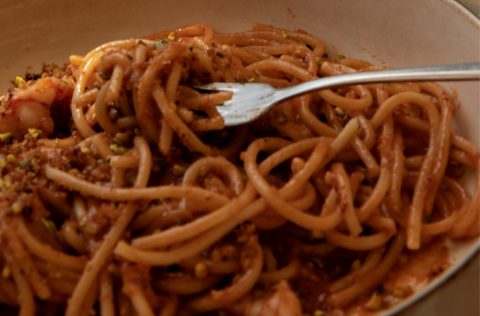
Back on the terrace of the small, discreet home he shares with his wife, Maser tells me that true Pantelleria aficionados are not here for the parties in gated villas. “Because of the harshness and difficulty of the place,” he says, “people who commit to the island become part of an extended family.”
At the airport on my way home I see a security guard kissing a departing passenger on both cheeks. As the plane soars up and I look towards the island laid out beneath me like a dark teardrop, I remember Gambaccini’s words, “you cry when you leave”, and soon I’m making plans to return.
